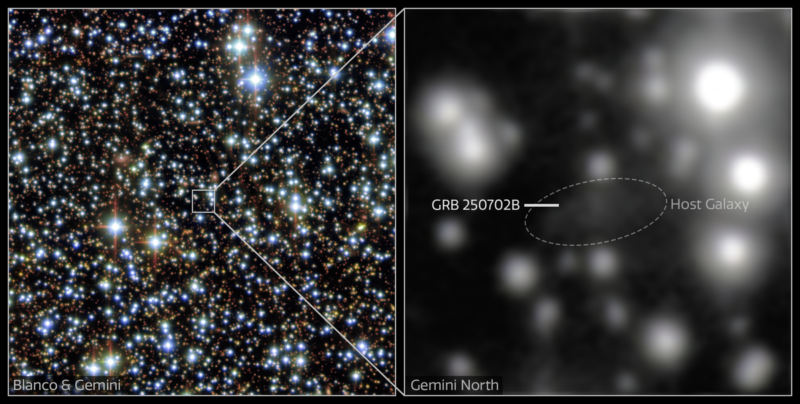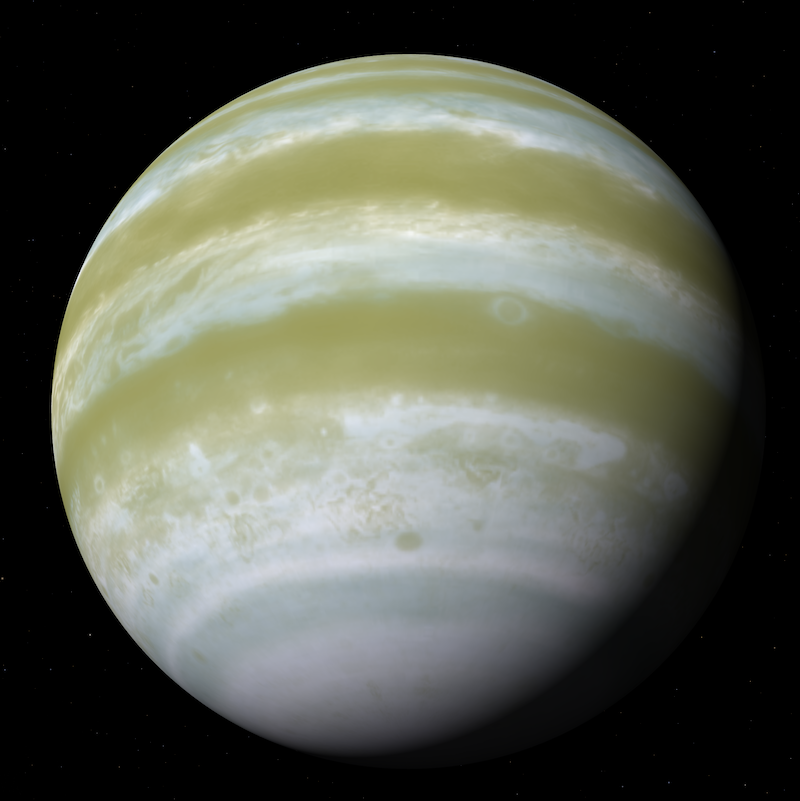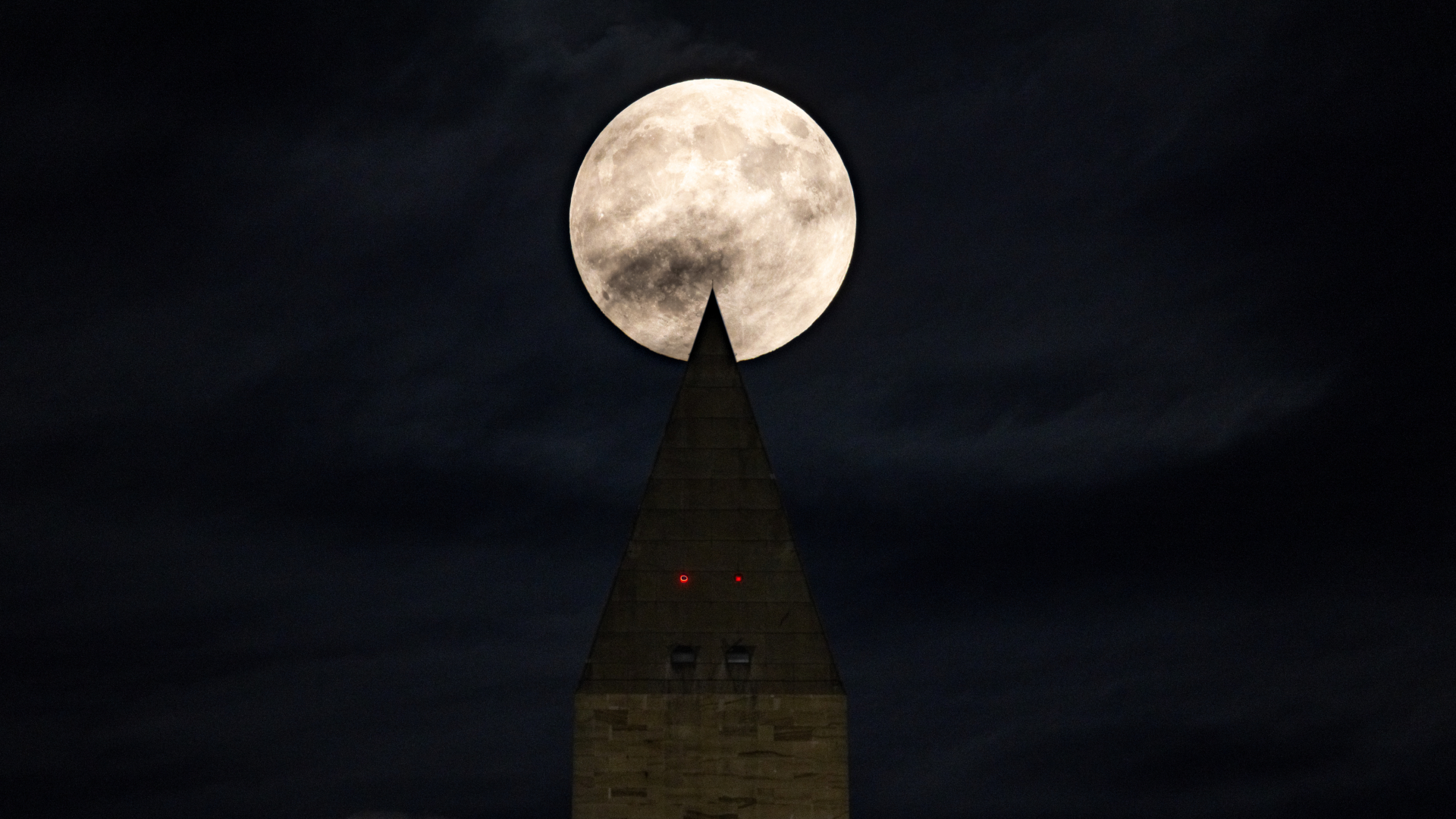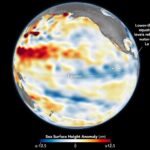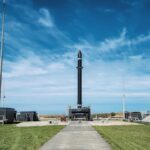Now Reading: Early universe was warmer than expected, new study says
-
01
Early universe was warmer than expected, new study says
Early universe was warmer than expected, new study says
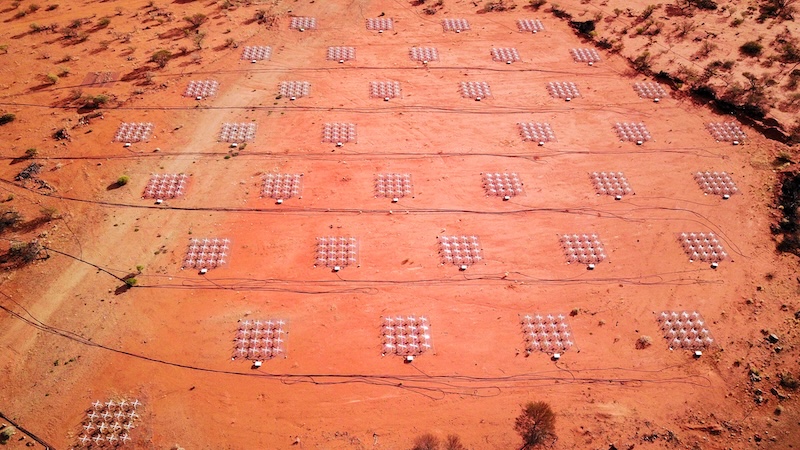
Ridhima Nunhokee, of the Curtin Institute of Radio Astronomy in Australia, gives a brief overview of her team’s discovery that the early universe was warmer than expected during the Epoch of Reionization. This video was provided by the International Center for Radio Astronomy Research.
- Astronomers say the early universe was warmer than expected some 800 million years after the Big Bang.
- This warming may have come from early X-rays produced by black holes and the remains of stars.
- Scientists made the discovery using data taken over 10 years by the Murchison Widefield Array radio telescope in Australia.
The early universe was warmer than expected
According to a new study, the early universe was warmer than once thought. Specifically, the researchers were probing a point around 800 million years after the Big Bang, during a crucial stage in our universe’s evolution known as the Epoch of Reionization. In this period, the fog of hydrogen gas obscuring the early stars and galaxies was ionized, making it transparent. This allowed starlight to pass freely and, billions of years later, reach our telescopes.
Astronomers in Australia used a radio telescope array to study hydrogen in the space between galaxies during the Epoch of Reionization. Cathryn Trott, the lead author of one of two papers on this study, explained:
As the universe evolved, the gas between galaxies expands and cools, so we would expect it to be very, very cold.
Our measurements show that it is at least heated by a certain amount. Not by a lot, but it tells us that very cold reionization is ruled out. That’s really interesting.
The new research points to the energy from early sources of X-rays – such as early black holes and the remains of dead stars – as possible causes for this warmer-than-expected early universe.
The researchers published two papers on this study, the first on August 5, 2025, and the second on September 30, 2025. Both papers are in the peer-reviewed Astrophysical Journal.
Looking for hydrogen signals in the early universe
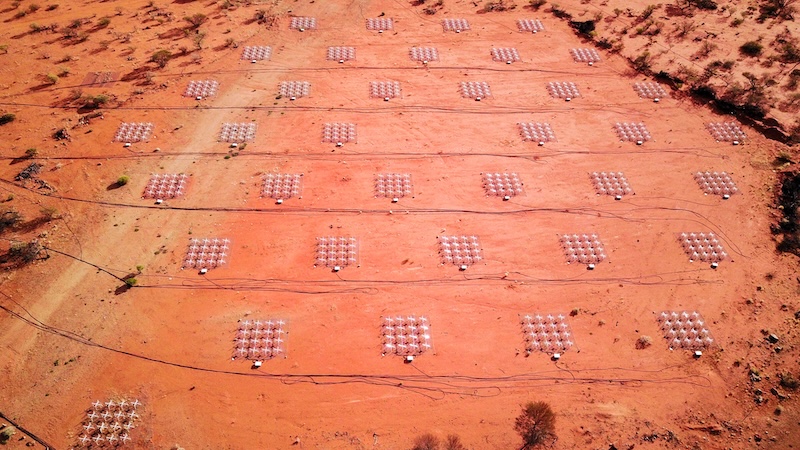
The astronomers used the Murchison Widefield Array radio telescope in Western Australia for their studies. In particular, they were interested in observing the 21 centimeter hydrogen line. This is a spectral line caused by a change in the energy state of neutral hydrogen. On Earth, this line is located in the microwave wavelength region of the electromagnetic spectrum.
But since they were looking for signals from extremely far distances, that spectral line is significantly redshifted towards longer radio wavelengths.
Isolating signals from the early universe
The astronomers analyzed data captured over 10 years, from 2013 and 2023. In order to look for the faint hydrogen signals from the Epoch of Reionization, they had to clean up their data to identify and remove radio waves from closer objects.
Ridhima Nunhokee, the first author of one of the papers, said:
These include emissions from nearby stars and galaxies, interference from the Earth’s atmosphere, and even noise generated by telescope itself. Only after carefully subtracting these ‘foreground signals’ will the remaining data reveal signals from the Epoch of Reionization.
From this research, we have developed methods to deal with the foreground contamination, and subtract the signals we don’t want, but also better understand our telescope and come up with a clean signal.
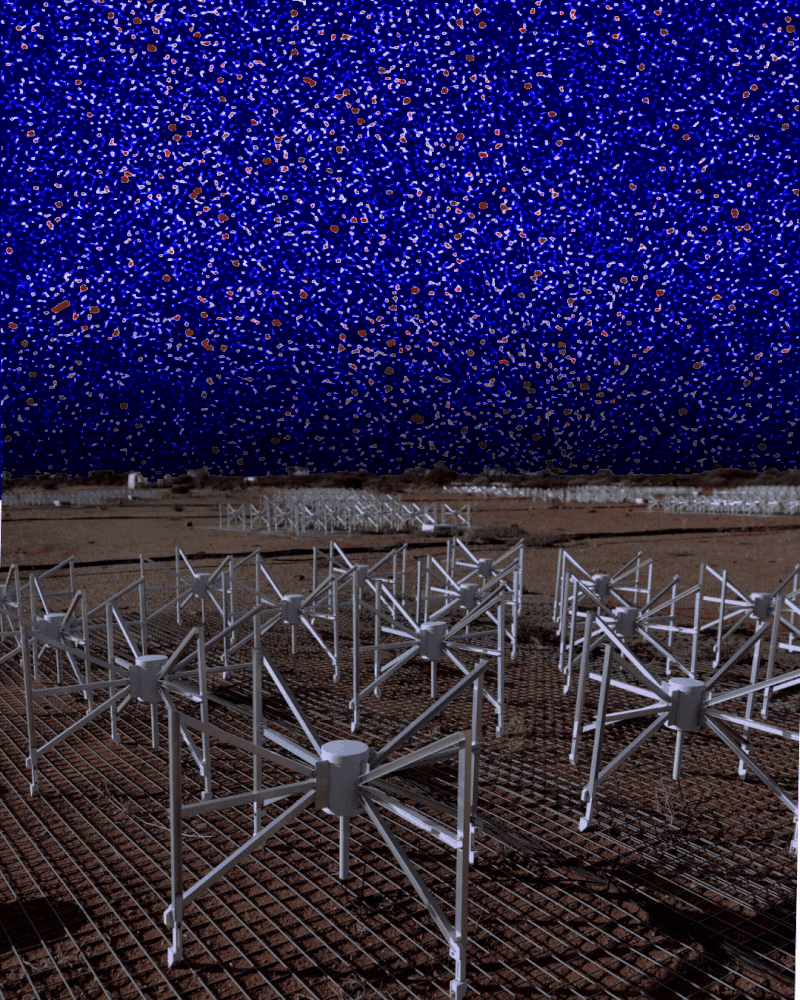
Using these data analysis techniques for future observations
Having cleaned the data, the researchers didn’t find the tell-tale characteristics that would indicate a cold universe. Therefore, the universe at this time – around 800 million years after the Big Bang – must have been a bit warmer than expected.
In the future, the team will apply their innovative data analysis techniques to get even higher quality data to fine-tune their results. This time, they will use the Square Kilometer Array telescopes, currently under construction in Western Australia and Northern Cape in South Africa.
A very brief history of the early universe
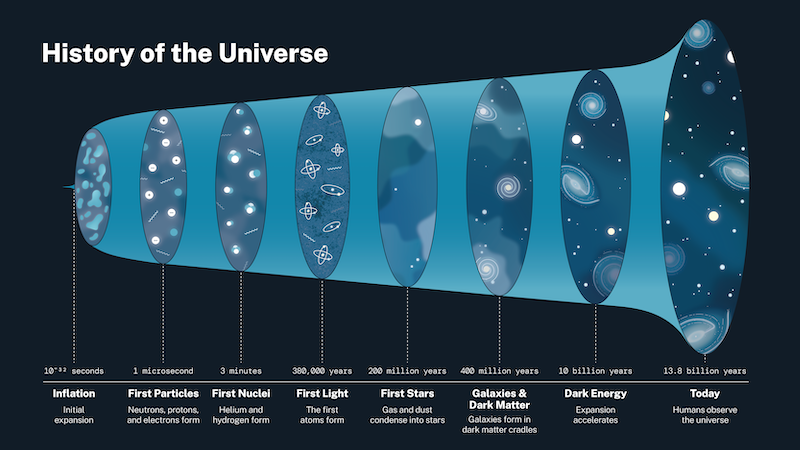
The universe originated 13.8 billion years ago in what scientists call the Big Bang. Very early on, the universe was a hot soup of subatomic particles. Then, as the universe began to expand and cool, the particles combined to form hydrogen and helium nuclei and free electrons. These electrons scattered radiation, making the universe opaque.
About 380,000 years after the Big Bang, as the universe continued to expand, it cooled down enough to form the first neutral atoms. Free electrons were captured by hydrogen and helium nuclei. And in that process, the atoms emitted light. With the absence of those radiation-scattering free electrons, light was now able to travel through the universe. Amazingly, we can see this light, called the cosmic microwave background, using space-based astronomical satellites and ground-based radio telescopes.
Then, for the next 200 million years or so, the universe lapsed into what astronomers call the dark ages. It was a dark expanse of hydrogen, with small amounts of helium and lithium. However, this ended when the first stars ignited, starting the Epoch of Reionization.
The Epoch of Reionization
Gas in the early universe was not uniformly distributed. In denser regions, gravitational attraction formed clumps of gas. They became massive and compact enough to ignite fusion reactions, forming the first stars. Subsequently, these stars and gases congregated into galaxies.
Initially, the first stars were obscured by hydrogen gas. But ultraviolet light emitted by the stars was energetic enough to ionize hydrogen, creating electrons and protons. By then, the universe had expanded enough that free electrons that scattered light were relatively diffuse. As a result, the universe became transparent enough to let light through.
This ionization of hydrogen by the first stars is known as the Epoch of Reionization. It began a few hundred million years after the Big Bang and lasted for a billion years. It is an important area of study in astronomy because that’s when the first stars and galaxies formed.
Bottom line: New data from the Murchison Widefield Array radio telescope reveal that the early universe was warmer than expected during the Epoch of Reionization.
Via The International Center for Radio Astronomy Research
Read more: What is the Big Bang?
The post Early universe was warmer than expected, new study says first appeared on EarthSky.
Stay Informed With the Latest & Most Important News
-
 012024 in Review: Highlights from NASA in Silicon Valley
012024 in Review: Highlights from NASA in Silicon Valley -
 02Panasonic Leica Summilux DG 15mm f/1.7 ASPH review
02Panasonic Leica Summilux DG 15mm f/1.7 ASPH review -
 03From Polymerization-Enabled Folding and Assembly to Chemical Evolution: Key Processes for Emergence of Functional Polymers in the Origin of Life
03From Polymerization-Enabled Folding and Assembly to Chemical Evolution: Key Processes for Emergence of Functional Polymers in the Origin of Life -
 04How New NASA, India Earth Satellite NISAR Will See Earth
04How New NASA, India Earth Satellite NISAR Will See Earth -
 05And Thus Begins A New Year For Life On Earth
05And Thus Begins A New Year For Life On Earth -
 06Astronomy Activation Ambassadors: A New Era
06Astronomy Activation Ambassadors: A New Era -
07SpaceX launch surge helps set new global launch record in 2024













